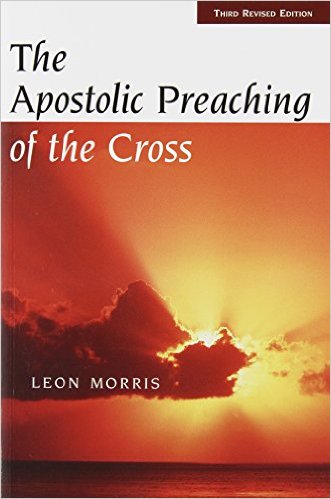A Brief Book Summary from Books At a Glance
About the Author
Leon Morris (1914–2006) was the famous New Testament scholar and Principal of Ridley College in Melbourne, Australia.
Table of Contents
- Redemption
- Covenant
- The Blood
- The Lamb of God
- Propitiation (1)
- Propitiation (2)
- Reconciliation
- Justification (1)
- Justification (2)
- Conclusion
Summary
Chapter 1: Redemption
In contrast to much modern theological writing, redemption has a more specific and tightly-bound usage in the thought-world of the Bible, specifically of the Old Testament.
Morris argues that the word cannot be forced to mean any sort of a general deliverance and sets forth its clearer and tighter foundations in the world of economy, and the market – specifically in trade and the manumission of slaves. From such a place in the extant literature, the term further is used to speak of offerings to expunge guilt or removed flight or metaphorically (in Philo of Alexandria) as a “ransom for a fool.”
The Old Testament basis for the New Testament use of the term refers to the “discharging ones obligation as a kinsman,” which “involved a delightful variety of activities” in Old Testament religion.
Thus, Old Testament redemption involves often the literal “paying of a price” or the “performing a required ceremony, responsibility, or action.” The substitution of living beings is evident through the sacrificial system’s use of animals or money offerings as a kopher in place of what would otherwise be a just payment of blood. Taken in this sense the ransom price itself is a substitute. (This use of the term is primarily that which later rabbinic writers employ.)
Morris glosses treatments such as Boatman’s redaction criticism—which removed the significant “payment price” overtones of the term—as well as moral influence interpretations that show no difference sui generis between the offering of Jesus and the offering of Maccabean martyrs, in order to set forth how the New Testament tightly conscribes the “redemption” word group to the reference of a payment price, specifically in line with the Old Testament.
Loutron and its cognates in the Maccabean literature indeed demonstrate the highest payment, the payment of one’s life, but further identifies the fulfillment of a divinely-established substitutionary requirement. Morris offers detailed discussion of Greek prepositions since they also are in evidence in the same Old Testament passages through the Septuagint. The later force of his argument inflects the places where the New Testament explicitly ties Christ sacrifice, far more than martyrs, to his payment of blood, whether in Jesus own sayings in the Gospel of Luke or in Paul’s interpretation in such places as Ephesians: 17 (“in whom we have the redemption through his blood, the remission of sins…”). Morris fills out the picture of divine satisfaction through the close association of forgiveness language with the word group at this point: more than mere humans are the objects of the redemption and shedding of blood. Tracing this path, Morris arrives at his application of the data to the exagorazo word group, arguing that the metaphor of “marketplace redemption” must refer to the state of sin out of which mankind is bought – perfectly resonant with the Exodus account and God’s calling his son out of Egypt.
Chapter 2: Covenant
The concept of covenant is central to every aspect of God’s relation with his people and shapes irrevocably the New Testament and its presentation of God’s work in Christ. Morris quantifies the uses of covenant; references to the Sinai Covenant and the New Covenant predominate. According to Morris’s research, the derivation of the term owes a great deal to the importance of its sacred meal. “Cutting the covenant” conjures the rite of blood associated with the covenant sacrifice. Further, Morris identifies themes of representation in the covenants in Babylonian analogues where the head of the sacrificed animal is construed as the head of the covenant participant. Morris marshals the evidence from actual covenants in the scripture ….
The remainder of this article is premium content. Become a member to continue reading.
Already have an account? Sign In
